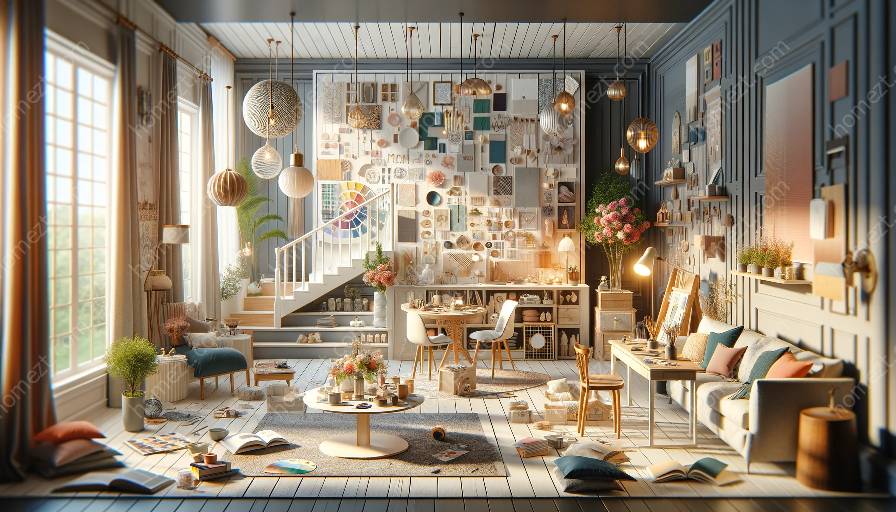In the world of design, storytelling plays a pivotal role in creating compelling design concepts and mood boards. Storytelling enables designers to infuse emotion, meaning, and purpose into their work, ultimately enhancing the overall impact of interior design and styling.
Storytelling in design is a powerful tool that helps convey the essence of a project, establish a connection with the audience, and evoke specific moods and emotions through visual elements. By weaving narratives and themes into design concepts and mood boards, designers can create cohesive, impactful, and memorable experiences for their clients.
The fusion of storytelling, design concepts, and mood boards not only amplifies the aesthetic appeal of interior spaces but also enhances the functionality and user experience. This comprehensive approach to design encourages deeper engagement, fosters a sense of authenticity, and allows for a more meaningful expression of the designer's vision.
The Impact of Storytelling in Design Concepts
Design concepts serve as the foundation for any project, dictating the overall direction, style, and ambiance of a space. Storytelling elevates design concepts by providing context, depth, and a compelling narrative that resonates with the end-users. By integrating storytelling elements, such as character, plot, and setting, designers can create a rich and immersive environment that goes beyond mere aesthetics.
Storytelling helps designers establish a unique identity for each project, enabling them to communicate the intended message and evoke a specific emotional response. Whether it's a residential interior, commercial space, or hospitality venue, the incorporation of storytelling in design concepts fosters a sense of connection and resonance, transforming spaces into engaging and memorable experiences.
The Role of Mood Boards in Storytelling
Mood boards act as visual representations of the design concept, capturing the essence and mood of a project through a curated collection of images, textures, colors, and materials. Integrating storytelling into mood boards adds a layer of depth and meaning, allowing designers to communicate the intended narrative and evoke desired emotions.
Through the careful selection and arrangement of visual elements, storytelling within mood boards helps convey the overarching theme, style, and atmosphere of a design project. From the initial concept development to the final presentation, mood boards infused with storytelling enable clients and stakeholders to immerse themselves in the envisioned narrative, facilitating a deeper understanding and appreciation of the design direction.
Enhancing Interior Design and Styling through Storytelling
Storytelling not only enriches design concepts and mood boards but also has a profound impact on interior design and styling. By infusing spaces with narratives and meaningful themes, designers can transform ordinary environments into immersive, engaging, and evocative settings that resonate with inhabitants and visitors.
For interior design, storytelling serves as a guiding principle, informing the selection of furnishings, materials, finishes, and decor elements. Every design decision is influenced by the overarching narrative, resulting in cohesive and purposeful spaces that go beyond mere aesthetics. Similarly, in styling, storytelling guides the curation and arrangement of objects, accessories, and decorative elements, contributing to a harmonious and impactful visual narrative.
The Holistic Approach to Design
Ultimately, the integration of storytelling into design concepts and mood boards represents a holistic approach to design that transcends traditional visual aesthetics. It acknowledges the power of storytelling as a means of enriching the built environment, instilling spaces with intention, emotion, and narrative depth.
By embracing storytelling in design, designers can create impactful and immersive experiences that resonate with clients, leaving a lasting impression and fostering a genuine connection. This comprehensive approach not only showcases the artistic prowess of designers but also underscores the transformative potential of design in shaping meaningful and compelling environments.


























